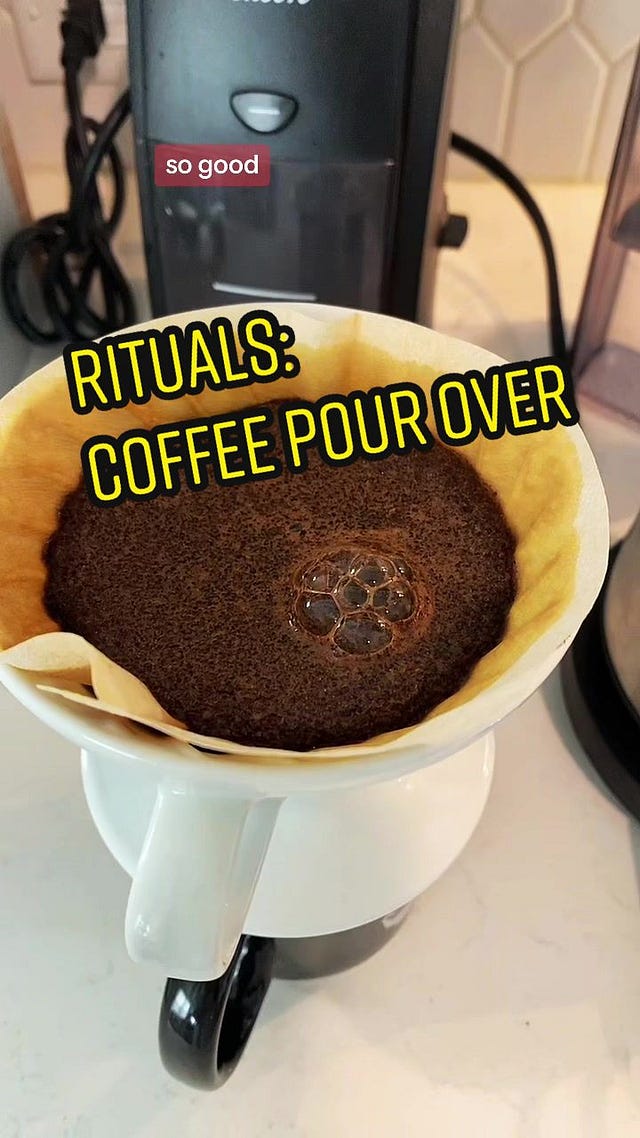3 ways to help your mother 🌎 this Earth Day
Your plastic, fashion, and diet choices can have more of an impact than you think
Earth Day is April 22nd, so I want to share a few things I’m doing to at least feel like I’m helping mother earth.
“Be the change” … am I right?
Don’t worry, I’m not trying to project any personal tree-hugging beliefs on you, nor would I ever tell anyone what I think they “should” be doing.
But from my research and the influences of my travels, lifestyle, and network, I’ve learned how my choices can impact the environment; this is across everything I do, from what I buy, eat and drink, to what I wear.
Content entrepreneur | Agency Founder & CEO | Bestselling author Featured in Forbes, The Wall Street Journal, Business Insider, Bankrate, Cheddar TV, and HuffPost | Join more than 6,480 people on the internet who follow me for discerning lifestyle, travel, and money content:
My general philosophy is one where the less of a footprint I have, the better.
The less I consume, the greater of an impact I can make.
My attitudes on conservation generally manifest among three key themes: what I’m using, what I’m wearing, and what I’m eating.
In short: it’s about how I regard plastics, fashion, and food.
Here are ways I try to be more resourceful and environmentally conscious in daily life.
Avoid single-use plastics; cut down overall plastic exposure
Plastic waste is everywhere.
It’s slow-degrading and microplastic pollution has seeped into oceans we swim in, the intestines of beloved marine life, and even in our packaged foods.
No surprise it’s also been detected in our blood, urine, and breast milk.
However, its use cases are many and in some cases unavoidable.
But I found out that plastic recycling is mostly a ruse and very few plastics, less than 10% in fact, can be totally recycled.
Such pollution has only become omnipresent in the most recent decade, so it's hard to tell what long term effects teeny tiny plastics will have on our bodies in 20 or 30 years’ time.
But it can’t be good.
As plastics break down, what else are they releasing into our environment and ourselves?
In the meantime, I'm doing my best to avoid any single-use plastics in the form of reusable canvas or cloth shopping bags, metal utensils, glass and reusable bottles, and reusable makeup and travel containers.
Avoid fast fashion; cut down textile waste
Earlier this year I wrote about how I'm not buying any new clothes in 2024, with a few exceptions, such as travel souvenirs or protective fitness or UPF clothing, or when I have to replace lost or damaged items.
I’m happy to say this experiment is going well so far.
It’s been freeing to not have the compulsion to buy new clothes, nor anxiety to “need” anything when skipping by sale windows and promotional emails.
Fast fashion is incredibly destructive and takes advantage of cities where the discards go to die.
Remember, a lot of times you'll find that you already have what you need in your closet, and if you don’t, then a used or pre-loved version of it is probably available to borrow, or at a vintage or thrift store, or on Poshmark.
How and what you buy and eat can make a significant impact
Try this fun experiment: Go to your local grocery store and try to buy things that aren’t wrapped or packaged in plastic.
You’d be lucky to come out with even 5 items.
Everything is touched by plastic and if not directly, then it’s likely tagged or embellished with a cellophane wrap or plastic lid or wrap.
Again, in some cases plastics are unavoidable but when possible, your food-buying choices can help with plastic reduction, for example:
Plastic bags: Try not to use plastic bags for your fruits and vegetables. Bring your own netted bags and reusable canvas or shopping bags.
Coffee: I've written about my coffee ritual, and how I prepare my daily pourover.
I grind my beans, boil my water with a metal gooseneck tea kettle, and use a ceramic Hario V60 coffee dripper with brown Hario paper filters; the filters are compostable.
When I feel like an espresso, I use an aluminum Bialetti Moka.
These methods help me reduce my overall plastic exposure to traditional home coffee machines, where drip filters and water chambers are plastic (not to mention, hard to clean, and over time I don’t want to think about what’s building up internally).
I also avoid single-serve Keurig or K-Cup machines. Not only are you preparing your coffee in a machine that's full of plastic, you’re also contributing to single-use plastic K-cup waste. Though they are working on a solution, I simply prefer the taste of a slower, freshly brewed pourover or espresso.Water: Remember what I mentioned above about microplastics? Well, in Miami, PFAs and microplastics have already made their way into the tap supply.
So, I purchased reusable BPA-free containers and then refill them at the Whole Foods water dispenser. The cost-per-fill is way more economical than buying expensive and wasteful plastic water bottles.When I’m in Charlotte, I utilize my Samsung fridge’s water filter, which claims to filter out 99% of tap water contaminants.
You may also be interested in general about the rise of the plastic bottled water industry.Buy what you’ll cook, cook what you’ll eat: When I lived in London, it was common to pass through the local village markets each night on your way home and pick up fresh produce or meats that you would prepare that night or the next.
In New York, it was as much as you could carry on your walk home, if you didn’t live close to a grocery store, and if you weren’t using Instacart.
In other parts of the U.S., however, we’re used to driving to the store for one or two massive grocery hauls per week.
This can result in overbuying and stocking, and in turn, a potential for lots of food waste. So be realistic when grocery shopping and buy what you’re actually going to cook and consume before things start expiring.Food choices: Your food choices and habits can help the environment. Yes. Check out what will happen to sushi in 50 years, and how eating just one or two meals per week with less or without meat can help make a difference.
So, what I’m using, what I’m wearing, and what I’m eating are the three main conservation pillars that guide much of my consumer behavior.
Personally, it’s all become habit and now I, I find it to live by anything else.
Try them for yourself and let me know how it goes!
**
Until next time,
Shindy
On Instagram + TikTok
***
Like it
Did you enjoy this newsletter?
Please like it by clicking on the ❤️ at the very top or bottom of this post. This really helps get this newsletter recommended to Substack’s recommended shortlists.
Or, if you enjoyed this, learned something new, and it will help you in any way, then you can also show your appreciation by buying me a coffee:
Share it, tell someone else about it
When you share my newsletter with someone or another big audience, that is the greatest gift.
This letter is free to all subscribers
My Substack is free for all subscribers. But paid subscriptions at $5 monthly and $4 per month charged annually are so, so appreciated. You can manage or upgrade your subscription here:










Fantastic, interesting, and so informative….!!!!🩷🩷